If you’ve ever heard Sir Ken Robinson’s TED Talk, you are likely aware that young children are naturally creative, and that formal schooling can squash creativity. That leads me to wonder: What is creativity? Is it possible to actually nurture creativity as children develop? And is it possible to teach children academics without squashing creativity?
I believe the answers to those questions are multifaceted, but indeed, we can support creative thinking and teach reading, writing, math, and content subjects. In this blog article, I want to summarize what creativity is and share a few activities you can try to nurture creativity in your homeschool.
First, what is creativity?
Research on creativity began shortly after World War II, so this is not a new topic, but there has been a resurgence of interest in what makes a person creative in recent years. Researchers have identified many elements that are considered part of developing a definition of creativity. Kampulis and Valtanen (2010) concluded that four components intersect in the studies. These components are:
- Creativity is an act.
- Creativity is a production, not a reproduction.
- Creativity acknowledges disequilibrium.
- Creativity is about sensitivity in perceiving a problem.
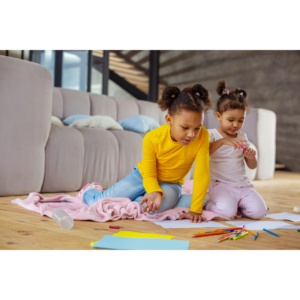
I could go more in-depth in discussing the nuances of these four components, but I would prefer to keep this article as practical as possible. Going back to the work of J. P. Guilford’s (1959) work on creative behavior, we can understand the elements of creativity in a way that leads toward opportunities to nurture creative thinking and activities in a homeschool environment. Guilford identified five elements involved in creativity: fluency, flexibility, originality, awareness, and drive. Joseph Renzulli is a major contributor to gifted education practices using the creative elements of fluency, flexibility, originality, and elaboration. I will share some ideas related to both Guilford’s and Renzulli’s elements that I have found useful in our homeschool.
As I explain each of these elements, I will share some fun, practical experiences that you can use in your homeschool.
Second, what are the elements involved in nurturing creativity?
We will look at the elements fo fluency, flexibility, originality / elaboration, awareness, and drive.
Fluency
Fluency is the ability to generate lots of ideas that can be sifted down to the most effective and unique solutions to a problem. Brainstorming is at the core of fluency. The first ideas we tend to generate when we brainstorm are the most familiar things we’ve learned from others or the easiest to do. When presented with a problem to brainstorm, I ask students to give all ideas that could be a possible solution even if they know it might not work. Nothing can be eliminated during a brainstorming session because that would involve evaluation and squash more creative ideas. When an individual or a group is brainstorming and gets to a lull in ideas, that is when it is important to press for a few more ideas. The ideas that come after the gap tend to be outside the box and more creative.

Sometimes it’s fun just to practice brainstorming for the sake of learning how to be fluent thinkers. Here are some fun topics to brainstorm together with your kids.
- Fun things to do outdoors
- Places to go camping or on vacation
- Things to do with ___ (Examples: soap, a board, a piece of wire, cotton balls, a piece of aluminum foil, a paper clip)
- Different words that can be made from a larger word (Example: How many 3 or more letter words can you make from the letters in Thanksgiving?)
- Things to eat that are ___ (pull a color from a hat)
- Toppings to put on a pizza
Flexibility
Creative flexibility is thinking of new categories or from a different point of view. Flexibility is somewhat related to task switching. As adults, we sometimes think of flexibility as a paradigm shift. Here are some ideas that can help nurture flexible thinking in kids.
- Three reasons why game. Take any scenario that has an unexpected outcome. Ask your students to give three reasons why they think the even went the way it did. (Example: Charlie like pepperoni pizza. The family had pizza on Friday, but Charlie didn’t eat any. Give three (or more) reasons why.
- How are they alike game. Give your child(ren) 2 very different objects and ask them to think of at least 3 ways the items are alike. (Examples: a brick and a bowling ball, an elephant and a table,
- What are some different ways you could make the number 24?
- Retell a story from a different character’s point of view (Example: The True Story of the Three Little Pigs is a great lead-in to this activity. Retell Cinderella from the prince’s point of view).
- What are unusual uses for ___ (Examples: a screwdriver, a jar lid, a cardboard box, plastic bags).
- Explore out-of-place objects discovered by archaeologists and speculate what uses they may have had and why they are where they are. (My son loved to consider various out-of-place objects and tell me what he thought based on his understanding of transportation and communication in history).

Originality / Elaboration
Originality involves creating something brand new. True originality is very rare because more of our ideas are actually new creations stemming from elaboration. Elaboration involves the concept of “piggybacking” on a product or practice that is already invented and in use. I often use ideas that encourage elaboration and originality through invention. Here are some projects you can use with your students:
- Think of a problem in your life that you wish had a solution. Create an invention that will solve that problem. (Examples: I had a student invent a toothbrush to use with braces. One student created a completely solar grill for outdoor cooking).
- Create a new main dish recipe.
- Think of a new type of non-motorized vehicle.
- Design a plan for a treehouse or fort.
- Look at a painting or sculpture and create your own art in a similar style. (Example: My daughter saw a sculpture of a head with tree branches for hair by Margo Girdler Engler. Bekah loved flowers and created her own elaboration art from a styrofoam head and silk flowers. It was very different from the original art she liked).
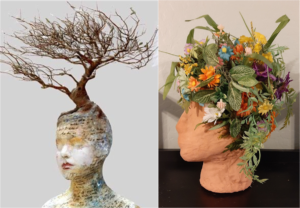
Awareness
Awareness involves problem identification. Many kids are told what to do and shown how to solve math problems or how to do everyday tasks. Awareness comes from the disequilibrium that Guilford listed. Disequilibrium involves having to think through and discover a solution to a problem on our own. We often do fine when an infant is learning how to reach for an object and figure out how to crawl or walk. We don’t always just hand them the object because we want to encourage the child to figure out how to coordinate their arms and legs to give them movement. The same principle applies to elementary kids. We want to allow them to struggle just a bit to solve a problem they’ve never faced before.
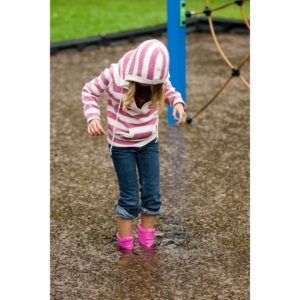
Some starter ideas for discussions are:
- What would you do if you saw ___ (mouse, rattlesnake, fallen tree, airplane) in the yard and an adult wasn’t around?
- What would you do if you wanted to open a box or jar that just wouldn’t budge?
- What would you do if your feet were stuck in mud?
- What would you do if the drain was clogged in the bathtub or sink?
- What can we do if the electricity goes out for 24 or more hours?
Drive
Drive is what we often refer to as internal motivation. Drive is having enough risk-taking motivation or initiative to take action on an idea or try a new task. Drive is nurtured by parents through support for autonomy, provision of structure, and security in relationship.
What is the quickest way to squash creativity?
The quickest way to squash creativity is to squash drive. Doing everything for your child removes autonomy. Too little or too much structure squashes drive. Unpredictable and inconsistent reactions in the parent-child relationship also squashes drive and creativity.
Autonomy involves permission to try something without instruction on every little step. This is one reason I prefer to give open-ended assignments rather than rely on worksheets for academics. I would much rather ask my child to narrate or write about a book they read than have them answer typical comprehensions. I want my kids to use the art materials I’ve purchased for them to be creative. My kids still asked for my help in getting out supplies, but liked to explore in drawing and combining various media.
Autonomy also involves risk-taking and disequilibrium. Disequilibrium is a sense of being off balance because a problem isn’t easily resolved. In middle school, my daughter used to enter cowboy poetry projects for 4-H. She wrote amazing poems that were funny or had an unexpected twist. She would struggle with finding rhyming words or rearranging lines to build the story within a poem. Each time she worked on a poem, it took an hour or so each day for about a week. She usually ended up in tears because the ideas didn’t come quickly. Rather than writing the poems for her or telling her the process was too difficult, I would wait for her to ask for help if she wanted it. Usually after working through the disequilibrium, she ended up with an amazing poem!
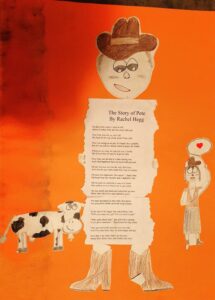
Structure is not discipline or punishment or being a helicopter parent. I think of structure as creating a “sandbox” that allows my kids to play and create within some limitations. For example, the kids can use any and all of the playdough in the cabinet to mix colors, make sculptures, practice with tools. But they must use it at the table, so the playdough doesn’t get embedded in the carpet. I encourage them to make tiny things, large things, experiment with drying techniques. Those are types of structure. We try different recipes for homemade playdough. My favorite is one using cornstarch for ornaments and jewelry beads. We don’t have gluten issues, but that would be a problem that would require creating solutions within limits (structure). Sometimes the limits may be safe use of the oven or cleaning chemicals.
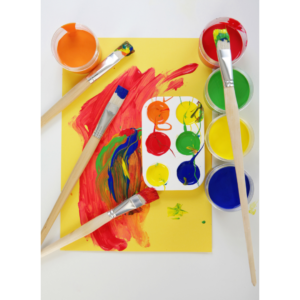
Security within the relationship means that nurturing creativity involves messes, but the reaction will be encouraging and supportive. Most messes can be cleaned up. Making sure your children have the structure to explore safely also means that when the messes happen, they will be emotionally safe from a mom temper tantrum of yelling, scolding, or punishing. Yes, it happens to all of us! Messes can be frustrating! Messy brainstorming may go out of our boundaries of comfortable topics and lead to discussions about morality or legal issues. Having tough discussions in a safe relationship is one of the beauties of homeschooling because we can guide our children in logical thinking according to our own values and beliefs.
Is it possible to teach academics without squashing creativity?
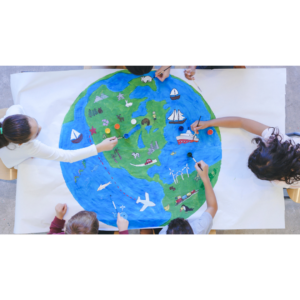
Yes, it is possible to teach academics without squashing creativity. Incorporating any of the elements of creativity into any subject area can encourage creative thinking. Some possibilities are:
- Phonics: Do spelling using art techniques, like using clay, oil pastels, textures, or doing watercolor washes. Then keep the materials out for the child to use the supplies to create one their own.
- Reading: How would you change the ending to the story?
- Math: Practice math facts with something that smells or tastes (Examples: Cinnamon/applesauce dough, pudding, butter, chocolate chips – whole or melted on parchment paper with a toothpick to write).
- Social Studies: Build the Great Wall of China or other famous landmark with boards and nails.
- Science: Make dyes from plants.
- Create a new invention that solves a problem. This assignment involves so much creative and critical thinking in all academic areas, I thought I would include it again.
You do not need to be an artist, musician, or actor to nurture creativity in your kids! All you need is an understanding of what creativity involves and a few practical ideas! Then…THINK and CREATE!
If you want to read more:
Caskey, M. (n.d.). 7 Ways to Encourage Creativity in our Kids. https://www.homeschool-your-boys.com/encourage-creativity/
Frierson, J. (2021). Reasons to Homeschool: Creativity Stimulated and Encouraged. https://www.nche.com/blog-reasons-to-homeschool-creativity-encouraged-and-inspired/
Hilton, W. (n.d.). 10 Ways to Inspire Creativity in Kids. https://hiphomeschoolmoms.com/ways-to-inspire-creativity-in-kids/
Kampylis, P. G., & Valtanen, J. (2010). Redefining creativity—Analyzing definitions, collocations, and consequences. The Journal of Creative Behavior, 44, 191–214
